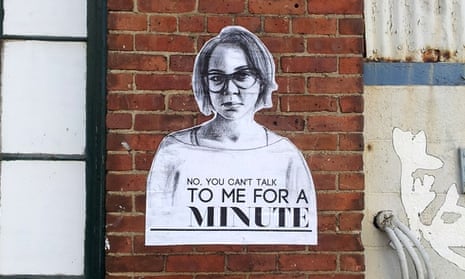When I think about the first time I saw a penis, it's like something out of a nightmare, or a really terrible Law & Order SVU episode. Blech.
Too private a moment to share? I agree. But unfortunately the moment itself wasn't private – thanks to a grown man who exposed himself to me on a Queens subway platform when I was just 12 years old.
I had just started taking the subway to school by myself, and had just barely missed the train, so the station was empty save for me and a man on the far end of the platform. When he started to masturbate, I didn't understand what he was doing. Then he started walking toward me.
Luckily, another train pulled into the station before he reached me, and he quickly stopped what he had been doing and boarded. I stood there, frozen in place, as the doors slid shut. My hands wouldn't stop shaking.
It would hardly be the first time I was flashed on a New York City subway – over the years, like a lot of young women, I endured ass-grabs, disgusting come-ons and a range of hisses, whistles and stares. For a long time, I thought there was something about me that invited the unwanted attention: it took until adulthood to realize that it was the common cost of being female in public spaces.
Now a new report on street harassment supports what I got an inkling of that day on the subway: sexual public harassment and violence toward women is a widespread, national problem.
The national study released on Tuesday from the nonprofit Stop Street Harassment shows that 65% of American women have experienced some form of street harassment – and 41% of all women were subject to physically aggressive harassment in public like being flashed or fondled. Men also report being harassed (and men who identified as LGBT were much more likely to be harassed than heterosexual men). No matter who was being harassed, men were most likely to be the harassers.
The focus on public harassment feels particularly timely in the midst of #YesAllWomen – the hashtag that took women's grievances with sexism viral. Holly Kearl, founder of Stop Street Harassment, told me that the report backs up the experiences of women sharing their stories on #YesAllWomen:
Most women have been the target of unwanted sexual or sexist commentary by men in public spaces and an alarming number have been followed, touched and assaulted by men. This harassment makes most women change their life in some way, like avoiding locations where they had been harassed, no longer going places alone, and even moving neighborhoods or quitting jobs.
I was actually surprised that the number of women harassed wasn't much higher than 65% - maybe what we know is harassment has become so expected and commonplace we almost don't identify it as notable anymore. Oh, a penis behind a newspaper? Business as usual.
Emily May, co-founder and Executive Director of Hollaback – an organization and online movement to end street harassment – says that what is exciting about the report and hashtag is that "this is what movements look like".
"The conversation has just exploded," she told me.
But what makes street harassment difficult to tackle in everyday life is that there doesn't seem to be a clear-cut way to deal with it. Other countries have tried to implement female-only train cars to curb harassment, Italy opened a women-only beach to stop the leering and catcalling and now hotels are even offering floors dedicated only to female travellers.
The message here is that women should change their behavior, not men. And what happens if women-only spaces become the norm and someone is harassed outside of one – will we blamed for not taking our designated train car? We deserve safety in public spaces, not just in segregated "safe zones".
Until we reach the point where the majority of people get just how bad street harassment is, May says, we need to make people understand that they can intervene when they see it happening. "Teaching those bystander intervention strategies is an important step," she added.
Other women, like artist Tatyana Fazlalizadeh, have taken to the street to make her point. Her series, Stop Telling Women to Smile, features portraits of women and captions that "speak directly to offenders, outside in public space".
Kearl says the report and the uptick in conversations about women and safety, "should be a wake-up call to local and national leaders that if we ever want to achieve gender equality in the United States, we must address street harassment and make public places safer for everyone."
Whatever the method, something needs to be done. Because while street harassment is just one of many violations that American women endure, its prevalence is a clear message to women and men: there are no safe spaces for women. We need to be able to walk the street and simply be in public without fear. Not just for equality, but because, one day, I'd like my daughter to take the subway to school.

